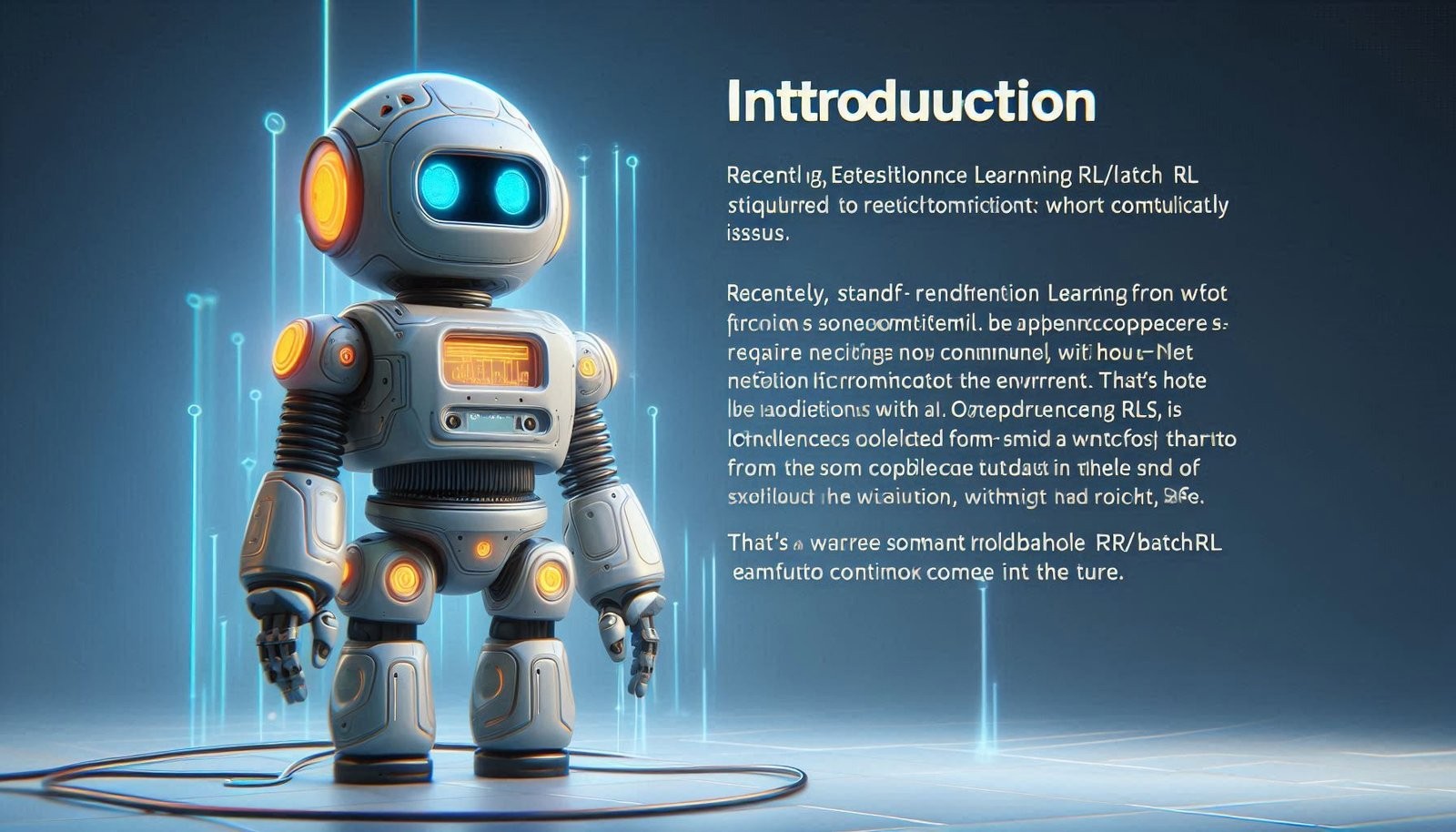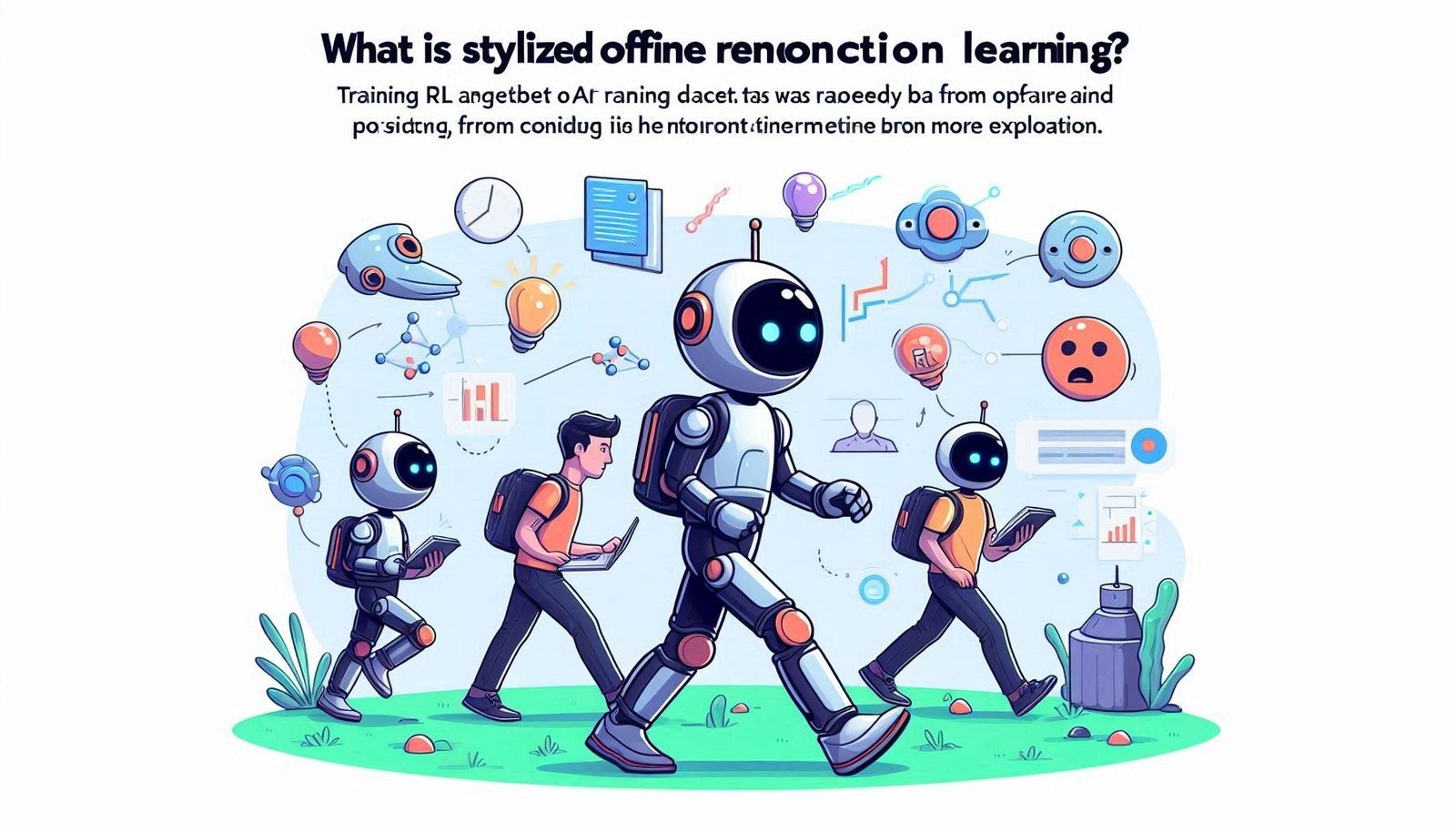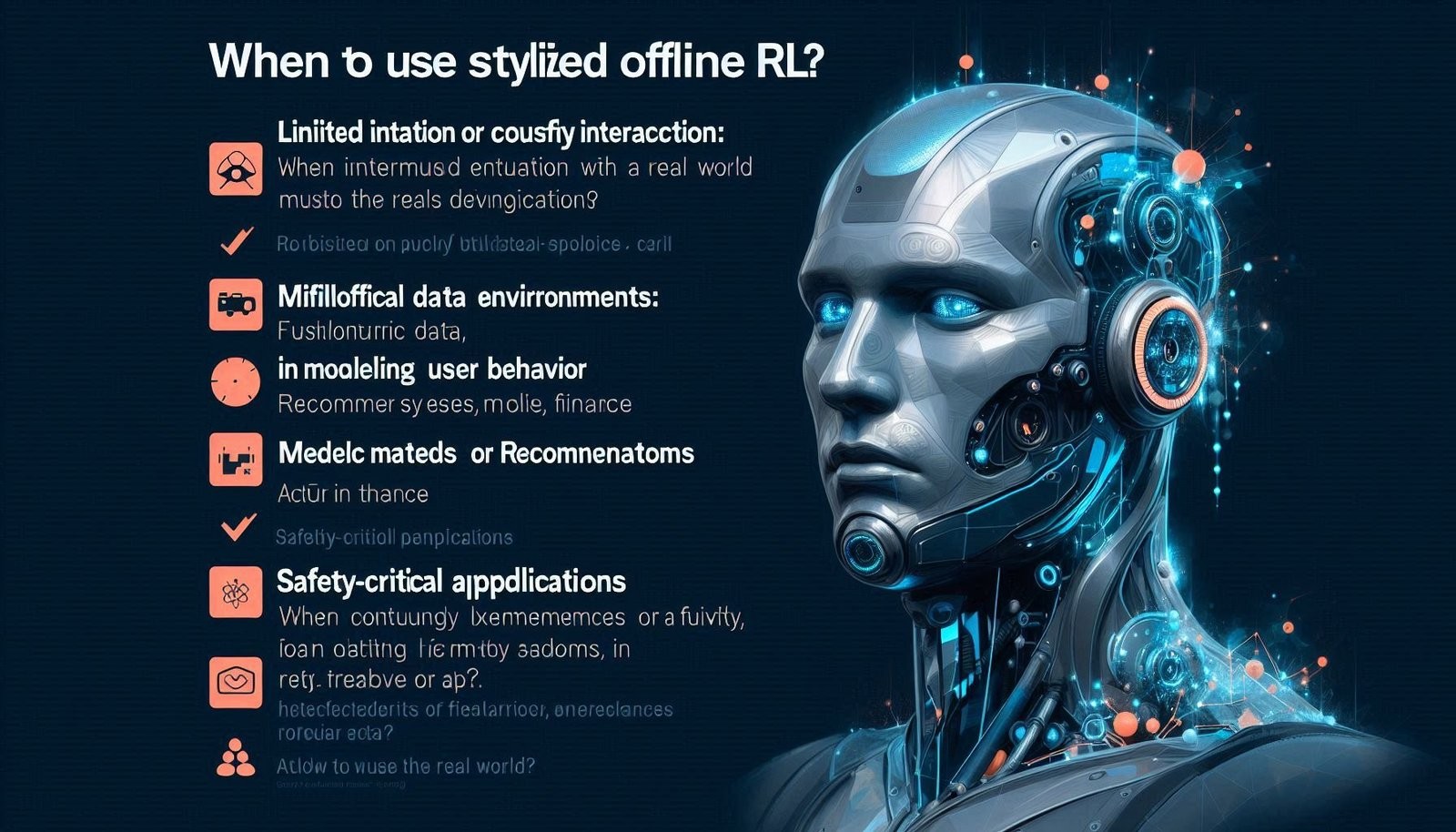Introduction
Recently, reinforcement learning (RL) has revolutionized how artificial intelligence (AI) approaches intricate problem-solving. However, traditional RL models often demand continuous interaction with an environment, which might be impractical or unsafe in many scenarios. This is where offline reinforcement learning (ORL) becomes essential.
Offline RL, also known as batch RL, allows agents to learn from previously gathered data without needing to interact with the environment directly. Stylized Offline Reinforcement Learning is an advanced area within ORL that focuses on developing specialized techniques and adaptations to improve the effectiveness and applicability of offline RL methods.
This article will explore the nuances of stylized offline reinforcement learning, providing clear definitions, illustrating its operational mechanisms, and highlighting its diverse applications and advantages over conventional online RL approaches.
What is Stylized Offline Reinforcement Learning?
Offline RL is a paradigm where an RL agent is trained using a pre-collected dataset, typically from past interactions within an environment. This approach enables the agent to learn and refine its strategies or policies without engaging in further environmental exploration.
Stylized offline RL represents a refined and customized evolution of offline RL methods. It involves tailoring and adapting existing offline RL algorithms to enhance their performance when working with data-driven models. These stylizations often include innovative modifications to standard RL algorithms to boost learning efficiency, improve generalization, or manage the challenges posed by limited or biased datasets.
Read more: Is It Necessary to Learn Python for ML 2025
Key Features of Stylized Offline RL:
- Environmentally Agnostic Learning: Learning occurs solely from historical data, eliminating the need for real-time environment interaction.
- High Data Efficiency: Stylized offline RL algorithms are designed to maximize information extraction from available datasets, even if they are limited or imperfect.
- Enhanced Safety and Risk Mitigation: Training can be conducted without the risks associated with real-world interactions, crucial for applications in sensitive fields like robotics and healthcare.
How Does Stylized Offline RL Work?
The functionality of stylized offline reinforcement learning is characterized by several core components that differentiate it from traditional RL. The following steps outline the typical process:
1. Data Collection
The initial stage involves assembling a comprehensive dataset. This dataset, crucial for training, is composed of state-action pairs derived from previous engagements with the environment, whether from real-world interactions or simulations.
- Data Sources:
- Existing logs from human-agent interactions.
- Simulated environments or computational models.
- Pre-existing real-world datasets relevant to the task.
2. Offline Policy Evaluation
This step utilizes the collected dataset to assess the efficacy of the agent’s current policy without further environmental exploration. This evaluation can be performed using various techniques:
- Value Function Approximation: Estimating the anticipated rewards or returns from specific actions within different states based on the offline data.
- Importance Sampling: Weighing the significance of observed actions by comparing them against the agent’s current policy, helping to correct for dataset biases.
3. Model Learning
In this phase, stylized offline RL algorithms learn a predictive model that maps past experiences to potential future actions. These algorithms are specifically engineered to handle inherent biases within the dataset, such as incomplete or uneven coverage of states and actions.
- Addressing Distributional Shifts: A primary challenge in offline RL is that the dataset may not encompass all possible scenarios. Stylized algorithms incorporate methods to mitigate distributional shifts, ensuring better generalization from the training data to unseen situations.
4. Policy Improvement
Once the model is trained, the agent’s policy is refined using feedback from the offline data. Stylized offline RL algorithms often integrate enhancements to ensure robust and stable learning:
- Regularization Techniques: Employed to prevent overfitting to the training data and improve the agent’s ability to generalize to new, unseen states.
- Conservative Policy Updates: Implementing strategies for safer and more stable policy adjustments by limiting the magnitude of changes in each update step.
Read more: Innovative Uses of Machine Learning in Fashion
Stylized Offline RL vs. Traditional RL
To fully appreciate the value of stylized offline reinforcement learning, it’s beneficial to compare it directly with traditional online RL.
Key Differences Between Stylized Offline RL and Traditional RL
| Feature | Stylized Offline RL | Traditional Online RL |
|---|---|---|
| Data Availability | Learns from pre-collected data (offline) | Requires real-time interaction with the environment |
| Exploration | No active exploration, dataset is fixed | Continuous exploration and environment interaction |
| Safety | Inherently safer due to no real-time actions | Potential risks due to real-time environmental actions |
| Data Efficiency | Highly efficient, leverages existing data | Can be data-inefficient, needing vast real-time data |
| Risk of Bias | Susceptible to biases in the training data | Biases can arise but exploration helps mitigate them |



When to Use Stylized Offline RL?
- Limited or Costly Interaction: Ideal when interaction with the real world is restricted, expensive, or time-consuming, such as in robotics, medical treatments, or autonomous driving development.
- Existing Data-Rich Environments: Highly suitable for domains with abundant historical data, including user behavior modeling, recommender systems, and financial analysis.
- Safety-Critical Scenarios: Crucial when real-world experiments or testing are hazardous, unethical, or impractical.
Benefits of Stylized Offline RL
Stylized offline reinforcement learning presents several compelling advantages over traditional RL methodologies:
1. Safety and Cost-Effectiveness
- Eliminates the need for active exploration, which can be dangerous and costly, particularly in sensitive sectors like healthcare and autonomous vehicles.
- Training on historical data significantly reduces the expenses associated with generating new data through trial-and-error in real environments.
2. Accelerated Learning Process
- Learning is expedited because the agent directly learns from existing datasets without needing to explore new environments actively.
3. Enhanced Generalization Capabilities
- Stylized offline RL algorithms are specifically designed to address and mitigate distributional shifts and biases present in datasets, leading to improved generalization to unseen scenarios and states.
4. Optimized Utilization of Data
- Effectively leverages all available information within a dataset, ensuring that models maximize learning even from limited or imperfect data sources.
Challenges of Stylized Offline RL
Despite its numerous benefits, stylized offline RL also faces distinct challenges:
1. Data Bias Issues
- Training on biased datasets can lead to suboptimal policies that fail to generalize effectively to new or unobserved situations.
2. Exploration Limitations
- The inherent lack of exploration in offline learning may prevent agents from discovering more optimal strategies or overlooking potential opportunities in less represented parts of the state space.
3. Computational Demands
- Certain stylized offline RL techniques, such as advanced regularization and importance sampling methods, can be computationally intensive, potentially limiting scalability and application in resource-constrained environments.
Applications of Stylized Offline RL
Stylized offline RL is increasingly adopted across various fields where traditional RL methods are either impractical or impossible to implement directly:
1. Autonomous Vehicles
- Offline RL enables autonomous vehicles to learn from extensive datasets of driving logs and simulated experiences to refine decision-making processes without real-world driving risks.
2. Healthcare Optimization
- In healthcare, offline RL can optimize treatment policies based on historical patient data, improving outcomes without the need for potentially risky or unethical real-world experimentation on patients.
3. Robotics Advancement
- Offline RL significantly benefits robotics by allowing robots to learn complex tasks from pre-recorded data, avoiding damage to physical robots and ensuring safety during the learning phase.
4. Financial Strategy Development
- In finance, offline RL is used to analyze historical market data and develop sophisticated trading strategies without continuous interaction with live, volatile markets.
Frequently Asked Questions (FAQs)
1. What differentiates offline RL from online RL?
Offline RL learns from a fixed, pre-existing dataset, whereas online RL learns through direct, ongoing interaction with the environment.
2. Is offline RL suitable for safety-critical applications?
Yes, it is exceptionally well-suited for safety-critical applications as it eliminates the risks associated with real-time environmental interaction.
3. What are the main challenges facing stylized offline RL?
Key challenges include dealing with biases in training data, the limitation of exploration, and potentially high computational costs.
4. Is stylized offline RL more efficient than online RL?
In scenarios with limited or expensive real-time interaction, stylized offline RL can be significantly more efficient by leveraging existing data effectively.
5. Is offline RL restricted to particular industries?
No, offline RL is versatile and applicable across numerous industries, including healthcare, robotics, autonomous driving, and finance, among others.
Conclusion
Stylized Offline Reinforcement Learning is a highly promising approach that offers significant advantages over traditional RL models, particularly in scenarios where real-time interaction is constrained or hazardous. By learning from pre-compiled datasets, it circumvents the need for active environmental engagement, making it invaluable for safety-critical and data-scarce domains. However, challenges such as data bias and the computational intensity of advanced algorithms must be addressed to fully realize its potential.
Through careful refinement and continuous innovation in stylized offline RL techniques, we can overcome these hurdles and unlock its transformative capabilities across a wide spectrum of industries. As AI technology progresses, stylized offline RL is poised to play a pivotal role in shaping the future of intelligent, data-driven systems.